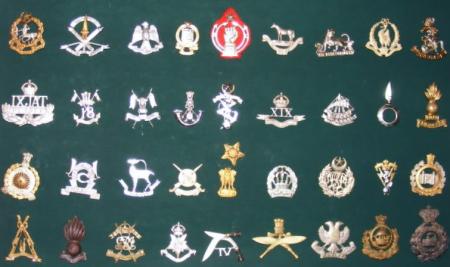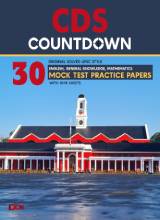All the regiments of the Indian Army
Hello aspirants,
One of the most frequently asked question of the interview is which arms or services would you like to join in after training? Most of you have already decide but still some of you haven’t so, this post will focus mainly on those and will explain important regiments of Indian armed forces so that it will be easy for the aspirants to tackle the question.
In this post we will know about the different regiment, motto and its creation and war fought along with medals and decorations.
The Dogra regiment
- The Dogra Regiment originated in 1877 is an infantry regiment of the Indian Army. The regiment traces its roots directly from the 17th Dogra Regiment of the British Indian Army.
- When transferred to the Indian Army regiments, the numeral prefix, i.e. 17 was removed.
- Motto-“Kartavyam Anvatma” (Duty before Death)
- War Cry-“Jwala Mata Ki Jai” (Victory to Goddess Jwala)
Pre-Independence
- The 41st Dogras were an infantry regiment of the British Indian Army that traced its origins to 1900 when it was raised as the 41st (Dogra) Bengal Infantry.
- After World War I, the Indian government reformed the army, moving from regiments with a single battalion to multi battalion regiments.
- It dropped '17th' from its title in 1945 and was allocated to India upon its independence in 1947.
Post-Independence
- The Dogra Regiment has fixed class composition for recruitment e.
- 50% from Himachal Pradesh
- 25% from of Jammu and Kashmir
- 25% from Hoshiarpur, Nawanshahr, Gurdaspur, and Rupnagar districts of Punjab.
- Men are willing to wear the olive green uniform in this area.
- The 5th battalion fought in the Kargil Warto capture Tiger Hill, the 9th battalion, Dogra Regiment (9 Dogra) was responsible for the fall of Pakistan Army's most fortified position in the country.
- This led to the ultimate liberation of East Pakistan and a victory for the Indian Army.
- The regiment is awarded various decorations like Victoria Cross, military cross, and several medals and COAS commendation cards.
The Assam regiment (the rhinos)
- The Assam Regiment raised in 1947 is an infantry regiment of the Indian Army.
- The regiment consists of 25 battalions including two battalions of Arunachal Scouts.
- It recruits exclusively from all the Seven Sister States of northeast India
- The regiment's emblem is the rhino, worn on the berets and belts that the soldiers wear. Rhinos in India are commonly found in the state of Assam.
- Motto-“Asam Vikram” (Unique Valour)
- War Cry-“Rhino Charge”
Pre-independence
- The regiment was raised on 15 June 1941 in Shillong to meet the claim of the then undivided state of Assam for its fighting unit and to counter the threat of the Japanese invasion of India.
- The area of Elephant Falls in Shillong was chosen to raise and train the first battalion.
- The initial draft of the regiment consisted of the harsh and cheerful Nagas, Mizos, Kukis, Garros, Meiteis and other tribals.
- The regiment showed the combat skills in the World war 2.
- Later, the Adis, Nishi, Monpas, other tribes of Arunachal Pradesh, domiciled Gorkhas and Sikkimese were also drafted into the regiment
- The regiment can boast of being composed of troops of diverse customs, cultures, languages, traditions and ethos belonging to the seven states of the northeast and Sikkim.
Post-independence
- The regiment, from a small group of three battalions at the time of independence, has now become a 22-battalion strong force with 15 regular battalions, three Rashtriya Rifles battalions, three Territorial Army battalions and one battalion of Arunachal Scouts.
- Since independence, battalions of the regiment have participated in the Sino-Indian War of 1962 and all the conflicts with Pakistan.
- The regiment was awarded a battle honour for its tenacious defence at Chaamb in the Indo-Pakistani War of 1971.
- Two of its battalions, 4 Assam and 7 Assam, have had the privilege of being part of the Indian Peace Keeping Force (IPKF) in Sri Lanka.
- 1 Assam, 15 Assam and 10 Assam have the unique distinction of being part of the UN Peace Keeping Force in Cambodia (UNTAC), Lebanon (UNIFIL) and the Democratic Republic of the Congo (MONUSCO) respectively.
- The regiment has many decoration and gallantry awards for their bravery during the war.
The Bihar Regiment
- The Bihar Regiment formed in 1941 is an infantry regiment of the Indian Army.
- The regiment can trace its origins back to the British Indian Army.
- Motto-“Karam Hi Dharam” (Work is Worship)
- War Cries-“Jai Bajrang Bali” (Victory to Bajrang Bali), “Birsa Munda Ki Jai” (Victory to Birsa Munda)
Pre-independence
- The Bihar Regiment was formed in 1941 during World War II by regularising the 11th (Territorial) Battalion, 19th Hyderabad Regiment as the 1st Battalion Bihar Regiment. In 1942 The 2nd Battalion was raised.
- Bihari battalions raised by Mir Kasim defeated the British in some engagements. The Bihari, or Purbiya, soldiers after that made up the backbone of the Bengal Infantry of the British Colonial Army.
- They were not only excellent soldiers but also quick to learn and apply the tactical drills with the initiative.
Post-Independence
- The regiment gets its recruits from the Indian state of Bihar, Jharkhand, Odisha, Gujarat and Maharashtra.
- The regiment fought major wars like Indo-Pak war 1965, 1971 and Kargil war 1999.
- Units of the regiment have also served in UN Peacekeeping operations in Somalia (UNOSOM) and the Democratic Republic of Congo (MONUC).
- The regiment was awarded Decorations like Ashoka chakra and Mahavir chakra.
The Grenadiers regiment
- The Grenadiers formed in 1788 is an infantry regiment of the Indian Army.
- Earlier the regiment was known as 4th Bombay Grenadiers, but after independence, the name was changed to Grenadiers.
- The regiment has won many battle honours and gallantry awards.
- It is considered to be one of India's most decorated regiments with three Param Vir Chakra awardees in three different conflicts.
- The regimental centre is in Jabalpur Madhya Pradesh.
- Motto-“Sarvada Shaktishali” (Ever Powerful)
History
- The concept of 'Grenadiers' evolved from the practice of selecting the bravest and most influential men for the most dangerous tasks in combat.
- The Governor General of Bombay made an Order on 12 November 1779, following which regiments combined to form the very first Grenadier Regiment in the world.
- The regiment fought many wars during the colonial era like the WW-1 and WW-2.
Independence
- After independence, the name was changed to the grenadiers.
- The regiment fought many battles after independence also like the battle of Asal Uttar, guards, tiger hill etc.
- The Grenadiers have the unique and distinct honour of having the most number of Param Vir Chakras, India's highest medal for gallantry, among all the Indian Army's Infantry Regiments.
- The regiment is also a recipient of Victoria cross and India order of merit.
The Sikh Regiment
- The Sikh Regiment originated in 1846 is an infantry regiment of the Indian Army that recruits from the Sikh community.
- The modern Sikh Regiment traces its roots directly from the 11th Sikh Regiment of the British Indian Army.
- It is the most highly decorated regiment of the Indian Army and has won several gallantry awards for bravery.
- Motto-“Nischay Kar Apni Jeet Karon” (With determination, I will be triumphant).
- War Cry-“Bole So Nihal, Sat Sri Akal” (one will be blessed eternally who says that God is the ultimate)
Pre-Independence
The first battalion of the regiment was officially raised just before the annexation of the Sikh Empire on August 1, 1846, by the British East India Company.
Post-independence
- The soldiers are recruited from the Sikh community from Punjab and the surrounding states.
- They are trained internally by the regiment, in which they tend to spend most of their careers. Officers, however, can come from all regions and communities in India and tend to leave the regiment subject to promotion.
- Museum of the regiment displays the courage and awards in four halls.
- Gallant performance during Kargil war in capturing the tiger hill received appreciation from the COAS.
- The regiment has to its credit over 1600 gallantry awards including Victoria cross, Indian order of merit.
The Mahar regiment
- The Mahar Regiment formed in 1941 is an infantry regiment of the Indian Army.
- It was initially intended to be a regiment consisting of troops from the Mahar community of Maharashtra.
- The Mahar Regiment is one of the only regiments in the Indian Army that is composed of troops from all communities and regions of India.
- This regiment consists of 19 battalions.
- Motto-“Yash Sidhi” (Success & Attainment)
- War Cry-“Bolo Hindustan Ki Jai” (Say Victory to India)
History
- R. Ambedkar was Defence Advisory Committee in 1941.
- He used this appointment to exert pressure within the military establishment for a Mahar Regiment.
- In October 1946, the Regiment transformed into a Machine Gun Regiment, and the Regimental Centre was at Kamptee.
- They had the unique composition of Bengalis, Oriyas and Gujratis – the communities that had been stamped as non-martial by the British.
- Their entry into the Mahar fraternity added strength to a social integration-the distinctive feature which the regiment has always been proud.
Awards and decorations
- The Mahar regiment was awarded many medals for their bravery.
- 1 Param Vir Chakra, 4 Maha Vir Chakra, 29 Vir Chakra, 1 Kirti Chakra, 12 Shaurya Chakra, 22 Vishisht Seva Medals and 63 Sena Medals.
The Kumaon regiment (the creed of the man-eaters)
- The Kumaon Regiment originated in 1813 is one of the most decorated infantry regiments of the Indian Army.
- The regiment has fought in every primary campaign of the British Indian Army and the Indian Army, including the two world wars.
- The regiments recruit from the Kumaonis of the Kumaon division and the Ahirs from the plains.
- Motto-"Parakramo Vijayate" (Valour Triumphs)
- War Cry-“Kalika Mata Ki Jai” (Victory to the Great Goddess Kali), “Bajrang Bali Ki Jai” (Victory to Bajrang Bali), “Dada Kishan Ki Jai” (Victory to Dada Kishan)
Pre-Independence
- In 1853, at the time of the signing of a treaty between the Nizam and the British, the Nizam's forces consisted of 8 battalions.
- The force was renamed as the Hyderabad Contingent subsequently, becoming the 19th Hyderabad Regiment.
- On 27 October 1945, after the Second World War, the 19th Hyderabad Regiment was renamed as 19th Kumaon Regiment.
- During the colonial period, this regiment fought wars like WW-1 and WW-2
Post-Independence
- The senior battalion, 1 Kumaon, initially raised in March 1813, was converted to the airborne role in 1946.
- It fought with distinction in the Indo-Pakistani War of 1947 as 1 Kumaon (Para).
- It remained a part of the regiment until April 1952 when it was inducted into the Parachute Regiment as 3 Para.
- In 2000, the battalion was converted to special forces as part of the expansion of the special operations forces of the Indian Army and renamed 3 Para (SF).
- 1 November 1970, the Naga Regiment was raised and affiliated with the Kumaon Regiment.
- The class composition of this regiment comprises Nagas, Kumaonis, Garhwalis and Gurkhas.
- The regiment brought laurel by fighting in major wars like Indo-Pak war of 1947-46, Indo-Shino war 1962, Indo-Pak war 1965 and 1971, Kargil war 1999 and various operations like Meghdoot and opPawann.
- The regiment has many gallantry awards along with the first recipient of PVC(Maj Somnath Sharma) was from this regiment.
The Naga regiment
- The Naga Regiment is one of the fiercest infantry regiment of the Indian Army.
- It is among the youngest regiments of the Indian Army – the first battalion raised in Ranikhet 1970.
- The regiment recruits mainly from Nagaland, in northeast India.
- War Cry-“Jai Durga Naga” (Hail Durga Naga)
History
- Nagaland attained its statehood in 1963, and seven years later Naga regiment was formed.
- Several ex-militants were given a fair chance to prove their newfound nationalism and made to join the Indian Armed Forces.
- Many of them were directly appointed junior commissioned officers.
- Bypassing the training schedule, the Naga Regiment was ordered to move into the concentration areas. The regiment forced into counter-insurgency operations with barely any preparation.
- The regiment's troops consist of 50% Nagas and 50% of an equal number of Kumaonis, Garhwalis and Gorkhas.
War engagement
- During the Indo-Pak 1971 battle, The 1st battalion (1 Naga) took part in operations in East Pakistan and earned a name for the regiment awarded with one Vir Chakra and three Sena Medals.
- They brought laurel during Kargil war by destroying the enemy and winning the medal for the regiment.
- Naga regiment actively takes part with UN peacekeeping mission.
- Several decorations and medals awarded to this regiment for its bravery.
The JAK-LI regiment
- The Jammu and Kashmir Light Infantry (JAK LI) formed in 1947 is an infantry regiment of the Indian Army.
- Its regimental insignia consists of a pair of crossed rifles. The regiment mostly consists of volunteers from the state of Jammu & Kashmir.
- 50% of the regiment's troops are Muslims while the rest represent other ethnic groups from the state.
- Motto-“Balidanam Vir Lakshanam” (Sacrifice is a characteristic of the Brave)
- War Cry-“Bharat Mata Ki Jai” (Victory to Mother India)
History
- In response to the Pakistani invasion of Kashmir in 1947, local militias were raised for specific sectors, such as Jammu, Leh, Nubra, etc.
- The militias were a paramilitary force under the Indian Ministry of Home Affairs and operated on the Line of Control.
- The militias conducted themselves with great distinction during the Indo-Pakistan War of 1965 and earned three battle honours during the Indo-Pakistan War of 1971.
- The troopers of the force felt strongly that they wanted the dignity and privileges of a regular army unit, especially keeping in mind their performance and sacrifice in the recent wars.
- In 1972, the J&K Militia was converted to a full-fledged Army regiment as the Jammu and Kashmir Militia under the Ministry of Defence.
- Brigadier Puar went on to become the first Colonel of the Regiment. In 1976, the regiment was renamed as the Jammu and Kashmir Light Infantry.
Wars engagement
- During the Siachen conflict, the regiment played a vital role in operation Meghdooth. HC Bana Singh hailed from this regiment who got PVC.
- During Kargil war in 1999, The Chief of Army Staff made a special instant award of "Unit Citation" to the 12th battalion for their exceptionally gallant and sterling performance during the battles.
- JAK LI regiment is deployed in a various peacekeeping force in Sri Lanka, Somalia etc.
- The regiment has been awarded many gallantry awards as well.
The Madras Regiment
- The Madras Regiment originated in 1758 is one of the oldest infantry regiment of the Indian Army.
- The regiment took part in numerous campaigns with both the British Indian Army and the post-independence Indian Army and brought laurel to the regiment and country.
- Motto-“Swadharme Nidhanam Shreya” (It is a glory to die doing one’s duty
- Warcry-“Veera Madrassi, Adi Kollu, Adi Kollu” (Brave Madrassi, Hit and Kill, Hit and Kill!)
Pre-independence
- The Madras Regiment was initially formed as the Madras European Regiment in the 1660s by the East India Company.
- It was formed as a battalion in 1748 under the command of Major Stringer Lawrence. The corps was involved in all the battles against the French forces in India.
- Lawrence structured the regiment to include two battalions, one European and one Sepoy (Indian).
- The regiment has been through many campaigns with both the British Indian Army and the Indian Army.
- Many well-known British officers have commanded this regiment, among them Robert Clive.
- This regiment fought in the Carnatic wars of South India.
Post-Independence
- After independence, several infantry battalions were merged to form madras regiment.
- The battalions of the Regiment fought fierce battles during the 1947–48 Jammu & Kashmir Operations, the 1962 Sino-Indian Conflict and the Indo-Pak Wars of 1965 and 1971.
- The deployment of as many as seven battalions of the Regiment in Sri Lanka during Operation Pawan in 1987–89 showed faith the Indian Army reposed in the loyalty, dedication and bravery of the troops of the Madras Regiment.
- The regiment has taken part in various humanitarian aid operations in India. It has also taken part in different UN Peacekeeping missions.
- The regiment has been awarded unit citations by the COAS in recognition of their splendid service in combating insurgency in Jammu & Kashmir and Punjab.
- The regiment still recruits heavily from Tamil Nadu, Kerala, Karnataka and Andhra Pradesh with a slight majority of Tamil- and Malayalam-speaking recruits.
The Ladakh scouts regiment
- The Ladakh Scouts is an infantry regiment of the Indian Army, nicknamed the "Snow Warriors" or "Snow Tigers".
- The regiment's primary role is to guard India's borders in the high altitude areas of the Ladakh region, as well as Jammu & Kashmir in general.
- The Ladakh Scouts recruits mainly from India's Ladakhi and Tibetan communities and is among the Indian Army's most decorated units.
- It's soldiers honoured with over 300 gallantry awards and citations.
- War Cry-“Ki Ki So So Lhargyalo” (Victory to God)
History
- In 1948, the "Nubra Guards" were raised from local Ladakhi warriors to patrol India's mountainous border in the Ladakh region.
- In 1952, the Nubra Guards were merged as the 7th Battalion, Jammu & Kashmir Militia (which later became the Jammu and Kashmir Light Infantry). The 14th Battalion of the Militia was also raised from Ladakh in 1959.
- After the Sino-Indian War of 1962, the Ladakh Scouts was formed with 7th and 14th Battalions of the J&K Militia.
- The primary role of the unit is reconnaissance and interdiction in the high-altitude border regions.
War engagements
- Units of the regiment have been deployed in combat in every major Indian operation since the Indo-Pakistan War of 1965 and also during Kargil war 1999.
- The Ladakh Scouts was deployed with a battalion of the Kumaon Regiment to capture the Siachen Glacier in April 1984, as a part of Operation Meghdoot.
- The regiment has more than 300 gallantry awards.
The Parachute Regiment
- The Parachute Regiment is an airborne infantry and special forces regiment of the Indian Army.
- The regiment has 17 battalions with the regimental centre in Bangalore.
- The regiment is also known as the “The Paras red devil”.
- Motto-“Shatrujeet” (The Conqueror)
History
- The first Indian airborne formation was the British Indian Army's 50th Parachute Brigade raised on 29 October 1941.
- This formation consists of 151 Parachute Battalion,2 Parachute Battalion and 153 Parachute Battalion alongside other support units.
- 1944, the brigade was expanded to form the 44th Indian Airborne Division as the original 9th Airborne Division was to be named because the 44th Armoured Division was converted to an airborne unit.
- They fought many battles and took part in military operations during British rule.
Post-independence
- After independence and partition, the regiment was divided between the armies of India and newly formed Pakistan.
- India retained the Divisional HQ and the 50th and 77th Parachute Brigades, while the 14th Parachute Brigade went to Pakistan.
- This brigade consisted of battalions from different regiments: Punjab Regiment(Para), the Maratha Light Infantry (Para), and the Kumaon Regiment (Para).
- The uniform of their parent regiments remained the same except for a change in headgear to the maroon beret, and word 'Para' was added after their names.
- Their bravery was shown during 1947 war and also during 1971 war on Indo-Pak and Kargil war.
- Ther actively took part in operation Pawan, cactus and UN peacekeeping force.
Jai Hind






 Order Now on Amazon
Order Now on Amazon
